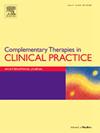Efficacy of different probiotic regimens for allergic rhinitis: A network meta-analysis
IF 2.2
3区 医学
Q2 INTEGRATIVE & COMPLEMENTARY MEDICINE
引用次数: 0
Abstract
Background
To evaluate the efficacy of different probiotic species in the treatment of Allergic rhinitis (AR), we used network meta-analysis (NMA), which provides a foundation for evidence-based therapeutic selection.
Methods
Nine databases were searched from their inception until April 30, 2024. Stata 17.0 and Review Manager 5.4 were used to conduct the NMA. The main outcomes included total nasal symptom score (TNSS), Rhinitis Quality of Life (RQLQ) global scores, total and specific IgE levels, blood eosinophil count, efficacy rate, and adverse events.
Results
31 randomized controlled trials (RCTs) were included, involving 2544 patients with AR. In the NMA, in terms of reducing TNSS: Saccharomyces > Mix > Bifidobacterium > Enterococcus faecalis > Lactobacillus > Bacillus > conventional therapy; in terms of reducing RQLQ: Mix > Lactobacillus > Enterococcus faecalis > conventional therapy; in terms of reducing Total IgE: Mix > Bifidobacterium > Lactobacillus > Tetragenococcus halophilus > conventional therapy; in terms of reducing Special IgE: Mix > conventional therapy > Bifidobacterium > Lactobacillus > Leuconostoc; in terms of reducing blood eosinophil count: Lactobacillus > conventional therapy > Mix; in terms of improving the efficacy rate: Saccharomyces > Mix > conventional therapy. No serious adverse events were reported regarding safety.
Conclusion
Probiotic mixtures may be the most effective in reducing RQLQ, Total IgE, and Special IgE; Saccharomyces may be the most efficacious in reducing TNSS and improving the efficacy rate; and Lactobacillus may be the most effective in reducing blood eosinophil count. Overall, probiotic mixtures demonstrated better combined efficacy.
不同益生菌治疗变应性鼻炎的疗效:网络荟萃分析。
背景:为了评价不同益生菌种类治疗变应性鼻炎(AR)的疗效,我们采用网络meta分析(NMA)方法,为循证治疗选择提供依据。方法:检索自建库至2024年4月30日的9个数据库。采用Stata 17.0和Review Manager 5.4进行NMA。主要结局包括鼻症状总评分(TNSS)、鼻炎生活质量(RQLQ)总体评分、总IgE和特异性IgE水平、血嗜酸性粒细胞计数、有效率和不良事件。结果:纳入31项随机对照试验(RCTs),共纳入2544例AR患者。在NMA中,在降低TNSS方面:Saccharomyces > Mix > Bifidobacterium > Enterococcus faecalis > Lactobacillus > Bacillus >常规治疗;在降低RQLQ方面:混合>乳杆菌>粪肠球菌>常规疗法;在降低总IgE方面:混合>双歧杆菌>乳杆菌>嗜盐四芽球菌>常规疗法;在降低特殊IgE方面:混合>常规疗法>双歧杆菌>乳酸菌>白菌;在降低血嗜酸性粒细胞计数方面:乳酸菌>常规疗法>混合;在提高有效率方面:酵母>混合>常规疗法。在安全性方面没有严重的不良事件报告。结论:混合益生菌降低RQLQ、总IgE和特殊IgE的效果最好;在降低TNSS和提高效率方面,酵母菌可能是最有效的;乳酸杆菌可能是减少血液嗜酸性粒细胞计数最有效的。总体而言,益生菌混合物显示出更好的联合功效。
本文章由计算机程序翻译,如有差异,请以英文原文为准。
求助全文
约1分钟内获得全文
求助全文
来源期刊

Complementary Therapies in Clinical Practice
INTEGRATIVE & COMPLEMENTARY MEDICINE-
CiteScore
6.30
自引率
6.70%
发文量
157
审稿时长
40 days
期刊介绍:
Complementary Therapies in Clinical Practice is an internationally refereed journal published to meet the broad ranging needs of the healthcare profession in the effective and professional integration of complementary therapies within clinical practice.
Complementary Therapies in Clinical Practice aims to provide rigorous peer reviewed papers addressing research, implementation of complementary therapies (CTs) in the clinical setting, legal and ethical concerns, evaluative accounts of therapy in practice, philosophical analysis of emergent social trends in CTs, excellence in clinical judgement, best practice, problem management, therapy information, policy development and management of change in order to promote safe and efficacious clinical practice.
Complementary Therapies in Clinical Practice welcomes and considers accounts of reflective practice.
 求助内容:
求助内容: 应助结果提醒方式:
应助结果提醒方式:


